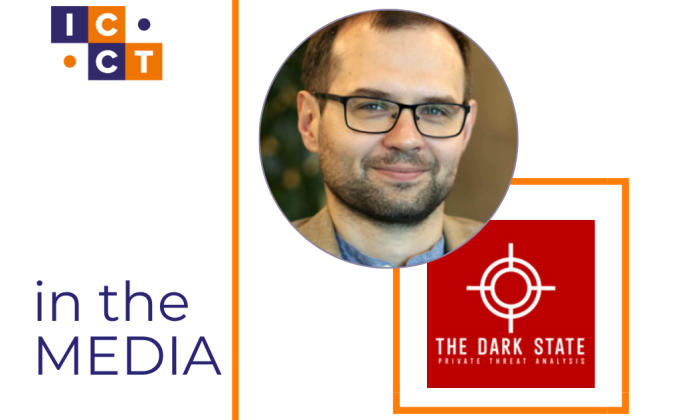The Ongoing Offensive
Al-Shabaab has been evicted – at least temporarily – from scores of Somali towns and villages since last summer. This includes strategic locations such as Adan Yabaal in Middle Shabelle, just north of Mogadishu, which had remained under the control of the group for most of the past fifteen years. These events began in June 2022 when al-Shabaab effectively broke a truce with the Ali Mahaweyne sub-clan of the Hawaadle by killing one of its prominent elders. Compounded by famine and al-Shabaab’s increasingly harsh ‘taxation’ policies, what initiated as a low-level mobilisation against the group, soon evolved into proactive efforts to recover territory, with other clan militias then also becoming involved. This ‘organic’ uprising coincided with the reinstatement of Hassan Sheikh Mohamud in his second term as Somalia’s President. Seizing his opportunity, President Mohamud declared a “total war against al-Shabaab,” and deployed Somali National Army (SNA) forces in support of the clans in the states of Hirshabelle and Galmudug. International actors such as the US, UK, EU, Eritrea, and Turkey have also provided various forms of support, including training for the SNA, police, and other security agencies.
Such conditions may provide fertile ground for disengagements from al-Shabaab. An increasing likelihood of becoming involved in military confrontations or experiencing aerial bombardment, for instance, may convince some members to leave the organisation. Indeed, even without the threats associated with the current offensive, research with former members has shown that many decide to leave to avoid further endangerment. Opportunities to escape may also increase, particularly if the loss of territory, and the confusion that often accompanies withdrawals from towns and villages, limits the degree to which al-Shabaab is able to continue enforcing involvement in the organisation. Yet, much will depend on the extent to which the Somali security forces have the capability (or the strategic sense) to adequately secure recaptured territory, rather than concentrate their finite resources on further pursuing al-Shabaab into remote areas. As observed by Harun Maruf, such a ‘clear and hold’ approach would help provide local communities with the confidence to act in support of the state, without the fear of repercussions if the insurgents return.
The Somali state has plenty of experience managing former members of al-Shabaab through its National Defectors Programme, which incorporates the Serendi centre in Mogadishu. The ultimate objective of this intervention is to undermine al-Shabaab through incentivising and facilitating disengagement. A screening process (as discussed in more detail shortly) distinguishes between ‘low risk’ individuals who are eligible for the programme, and those who are instead referred to the judicial system. Provisions for the former include basic education, vocational training, psychosocial support, and other services, to promote their rehabilitation and eventual reintegration back into the community. This Perspective provides guidance to policymakers and practitioners involved in such efforts in the context of an ongoing offensive that may result in significantly changed disengagement dynamics, and potentially even mass exits. It draws from our extensive professional experiences of providing technical support to disengagement programmes in Somalia (including Serendi), and elsewhere. It also applies key insights from two recent studies we conducted through the Resolve Network that focused on personal journeys in and out of insurgent violence in Somalia and Nigeria, drawing on interviews with former members.
Motivating Exit
Efforts to motivate exits from al-Shabaab often rely on so-called counternarratives that are designed to directly challenge the assertions of this insurgent organisation. For instance, these may aim to undermine the group’s claims of religious authority by persuading members (and other audiences) that their efforts are inconsistent with Islam, or that the leadership uses group finances for personal gain. Despite the intuitive appeal of such campaigns, many communications experts remain sceptical about their value, and evidence to demonstrate their effectiveness in Somalia and beyond remains in short supply. A particular concern revolves around the extent to which these campaigns tend to treat their audiences as passive receptors, rather than proactive consumers, of information. It is also important to recognise the degree to which perceptions are likely to be driven by ‘real world’ experiences with al-Shabaab (both good and bad), rather than communications campaigns managed by remote state and nonstate actors with often unknown agendas. In short, we question the extent to which counternarrative offer an effective use of finite resources.
Certainly not all members of al-Shabaab remain committed to its ideology and objectives. Indeed, with efforts to escape potentially punishable by death, our study for the Resolve Network (which focused on journeys in and out of al-Shabaab) revealed that many former members waited months or even years for suitable opportunities to exit. The motives behind the desire for exit vary between individual cases. Research conducted at the Serendi centre in 2015 revealed that many were driven by the prospects of state amnesty, a desire to reunite with families, improved personal safety, better living conditions, enhanced livelihoods prospects, and so on. More recently, our Resolve Network study also revealed that others were driven substantially by an increased awareness of the extent to which al-Shabaab applied brutal force against local communities. This driver is likely to be particularly prominent in Hirshabelle and Galmudug, where over the years al-Shabaab has forcefully requested recruits from local clans in return for protection and the enforcement of stability. In other words, it is important to recall that many individuals never wanted to join the insurgency in the first place, but were instead pressured or coerced into involvement.
With such issues in mind, we suggest that campaigns to motivate disengagement from al-Shabaab should concentrate on ‘nudging’ individuals who are already inclined to leave. They should also appeal to multiple drivers simultaneously, reinforcing motives already known to drive exit. For instance, they should help ensure that current members are aware of the state offer of amnesty, and what exactly it entails. This may involve relying on family members or community elders as intermediaries to raise awareness about the National Defectors Programme in Hirshabelle and Galmudug. They should also highlight how the programme supports the development of relationships by facilitating family visits to rehabilitation centres and helping to re-establish connections that have been lost. With many individuals originally joining al-Shabaab in pursuit of a salary and other financial gains, they should also emphasise the extent to which many former members are eligible for basic education, vocational training, and other forms of livelihood support.
Many former members also emphasise the extent to which their exit from al-Shabaab was motivated by the fear of injury or even death, with drone attacks often provoking particular anxiety. As previously observed, this is probably of particular relevance in the context of the ongoing offensive where such risks are heightened. Of course, the National Defectors Programme cannot guarantee security for individuals who disengage, with al-Shabaab often continuing to threaten its former members long after their exit. Nevertheless, communications campaigns should also emphasise the extent to which the programme does endeavour to minimise personal risk. For instance, this can be achieved through provisions of financial assistance to help relocate certain beneficiaries whose home communities remain under al-Shabaab control. Over recent years, increasing numbers have also opted to enlist in the SNA and other security agencies, with this also helping to address their fears of retribution by the insurgents (as well as providing a secure income and other benefits).
Facilitating Exit
Of course, disengagement programmes should be concerned not only with why individuals leave al-Shabaab, but also how. Put another way, these interventions should attempt to help motivate and facilitate exit. Many al-Shabaab members are based in remote territory, and they often lack information about how to reach locations where they can surrender. Suitably tailored campaigns can help provide this critical knowledge, with families and community elders again potentially acting as intermediaries. Similarly, communications efforts should help ensure that all relevant stakeholders (al-Shabaab members, their families and clans, security forces, and so on) are suitably informed about safe passage arrangements. While the prominence of this mechanism remains unclear in Hirshabelle and Galmudug, many members of al-Shabaab in other locations achieve exit through prearranged plans with the relevant security agencies, with these often arranged through family or clan connections. Unfortunately, such avenues are less available to individuals from families with few connections to the security system and those from less influential clans.
Those responsible for exit interventions should also recognise the central importance of community ‘buy-in’ for rehabilitation and reintegration. An absence of such support often results in severe social isolation and dramatically reduced work prospects for former members of al-Shabaab. However, as reported by Vanda Felbab-Brown, “perceptions toward individuals associated with al Shabaab vary enormously, ranging from acceptance to extreme ostracization.” She adds that “views are often based on whether a community, clan, or family’s experience with al Shabaab has predominantly been marked by brutality or the delivery of justice and protection services.” Unfortunately, formers in Hirshabelle and Galmudug may experience particular hostility given the extent to which the group has targeted local populations in these locations. While awareness of the National Defectors Programme remains limited, community members may also be hostile to the notion that former members of al-Shabaab are offered basic education, vocational training, and various other provisions, giving them a competitive advantage over their peers who remained uninvolved in the insurgency. This is often interpreted as rewarding participation in violence.
(Inadvertently) Undermining Exit
Of course, it is also important to consider policies and practices that may inadvertently disincentivise or obstruct exits from al-Shabaab. Perhaps most obviously, this includes interventions that fail to comply with human rights standards. While such considerations are placed at the heart of the current iteration of the National Defectors Programme, conditions at the Serendi centre were essentially inadequate prior to 2015, prompting certain residents to actively discourage their former comrades from disengaging. It is worth also considering the case of Nigeria, where many former members of Boko Haram and Islamic State West Africa Province (ISWAP) are processed and screened at Giwa Barracks en route to rehabilitation at Operation Safe Corridor (OPSC). These barracks are notorious for human rights abuses, and for extracting false confessions through violence, and this reputation alone undoubtedly inhibits further disengagements. Indeed, certain former detainees themselves drew such conclusions, with Amnesty International claiming that ‘after their experience, they would not counsel others to come out from the bush.’
Regarding eligibility for the National Defectors Programme in Somalia, the criteria are (or at least were in 2019) that candidate beneficiaries must have voluntarily disengaged from al-Shabaab, denounced the group, and are not seen to pose a risk to public safety. Of course, screening is widely regarded as being one of the most problematic aspects of these interventions, and problems are inevitably driven by the subjective interpretation of these criteria, inadequate intelligence, and the biases of screeners (for example, perhaps offering preferential treatment to their own clan members). Nevertheless, it is essential for programmes to be transparent and consistent with these criteria to incentivise exits from those who are likely eligible. It is also important that ‘the bar’ remains suitably placed. Returning to the case of Nigeria, our Resolve Network research revealed that the cohort that completed rehabilitation at OPSC in March 2022 only included individuals who had been forced into involvement with Boko Haram. In other words, many others who probably should have been eligible were excluded from the programme, including those in support roles for Boko Haram who had been motivated into involvement by status, peer pressure, economic incentives, and so on, rather than ideological motives. This excessively high threshold almost certainly disincentivised others from disengaging.
Those tasked with designing exit programmes should also consider limitations in the extent to which the current model in Somalia can be upscaled if the rate of disengagements increases rapidly, which seems plausible in the context of the current offensive. Bottlenecks are likely to appear in the reception and screening phases of the National Defectors Programme, meaning that many individuals who would otherwise be eligible may end up in detention over extended periods. Of equal importance, while exact figures of the number of beds at the rehabilitation centres are hard to come by (Serendi is designed to accommodate a maximum of two to three hundred individuals), the capacity is certainly limited. The residential model is also resource-intensive, with certain individuals remain in residence for six months (although this varies). With such issues in mind, it is worth considering the feasibility of community-based approaches for individuals at the lowest level of risk. Drawing from the Nigerian model, one option may be to incorporate an additional category in the screening process, distinguishing between high, low, and very-low risk former members. While those in the middle category would be eligible for rehabilitation at centres such as Serendi, those deemed to be very-low risk could be sent directly back to the community and periodically monitored by relevant agencies and individuals.
Conclusions and Recommendations
In this Perspective we have argued that the ongoing offensive in Hirshabelle and Galmudug provides conditions that are ripe for disengagement from al-Shabaab. These undermine the operational capabilities of the organisation. While many efforts to motivate exits from al-Shabaab rely on counternarratives that are designed to challenge their assertions, in the context of scarce resources we remain sceptical about their impact. Above all, this is because perceptions of al-Shabaab are likely to be primarily driven by ‘real world’ experiences of the group, rather than communications campaigns managed by remote actors. We believe that more can be gained by ‘nudging’ individuals who are already inclined to leave the group. With this in mind, we suggest that communications campaigns should attempt to reinforce the motives already known to drive exit, ideally appealing to various of these drivers simultaneously. Prior research has shown that these include the prospects of state amnesty, a desire to reunite with families, improved personal safety, better living conditions, enhanced livelihoods prospects, and the desire to disassociate from al-Shabaab’s brutal methods.
We have also argued that programmes must be designed to help facilitate disengagements, rather than only motivate them. For instance, communications campaigns should help ensure that potential defectors are provided with knowledge of how and where to surrender, and that all stakeholders are suitably informed about the safe passage mechanism. They should also promote community ‘buy-in’ given that an absence of such support can result in social isolation and reduced work prospects for former members. This is of particular relevance in Hirshabelle and Galmudug given the extent to which al-Shabaab has generated hostility amongst local populations in these states. Policymakers and practitioners should also be aware of common pitfalls that may inadvertently disincentivise disengagement. Among these, they must recognise the need to comply with human rights standards, and the importance of transparency and consistency with the eligibility criteria. They should also consider limitations in the extent to which the current model can be upscaled if the rate of disengagements increases rapidly, which seems plausible in the context of the current offensive. Finally, additional research is needed in Hirshabelle and Galmudug to better understand disengagement patterns in these states. These will undoubtedly reflect the ongoing offensive, as well as local factors such as clan dynamics, socioeconomic conditions, and demographic factors.
Photocredit: sntes/Shutterstock









